There’s something deeply satisfying about the aroma of freshly baked bread, and nothing beats the taste of a slice that’s just been cut from a warm loaf. Whether you’re dealing with a crusty sourdough, a delicate brioche, or a simple baguette, slicing bread can be tricky. A perfect slice requires the right technique and, most importantly, the right tool: the bread knife. In this guide, we’ll delve into everything you need to know about slicing bread perfectly every time and explore the essential qualities of a good bread knife.
What is a Bread Knife?
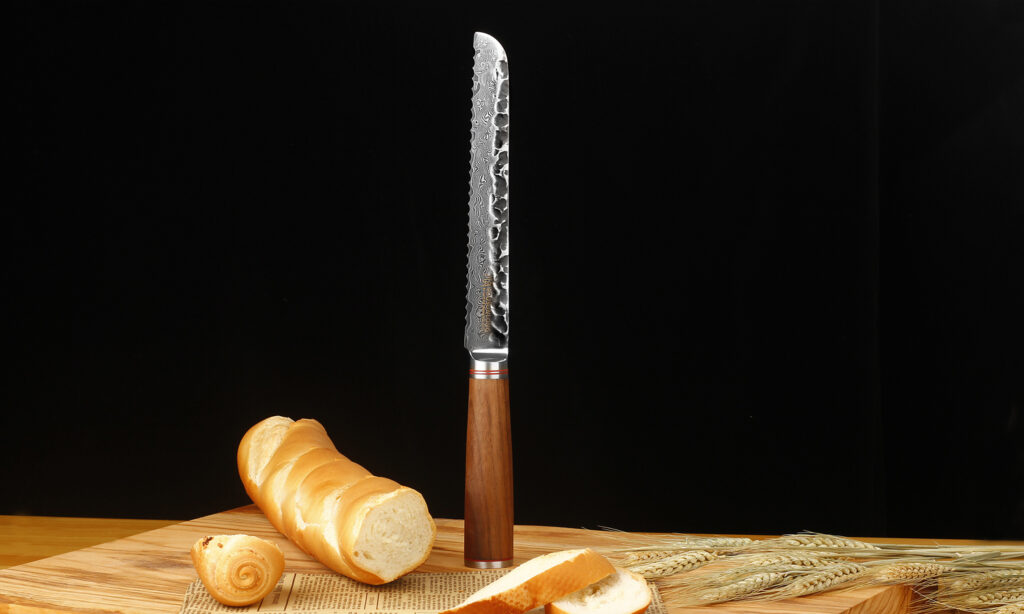
A bread knife is a specialized kitchen tool designed for slicing bread and other baked goods. Unlike standard knives, bread knives have a long, serrated blade that makes them ideal for cutting through crusty exteriors without crushing the soft, airy interior of the bread. The serrated edge allows the knife to “saw” through the bread rather than relying on brute force, resulting in clean, even slices.
Bread knives typically have blades that are 8 to 10 inches long, though they can vary in size. The serrations on the blade can also vary in size and spacing, with larger, wider serrations better suited for slicing through thick, crusty bread and smaller serrations ideal for delicate loaves.
How to Choose the Perfect Bread Knife
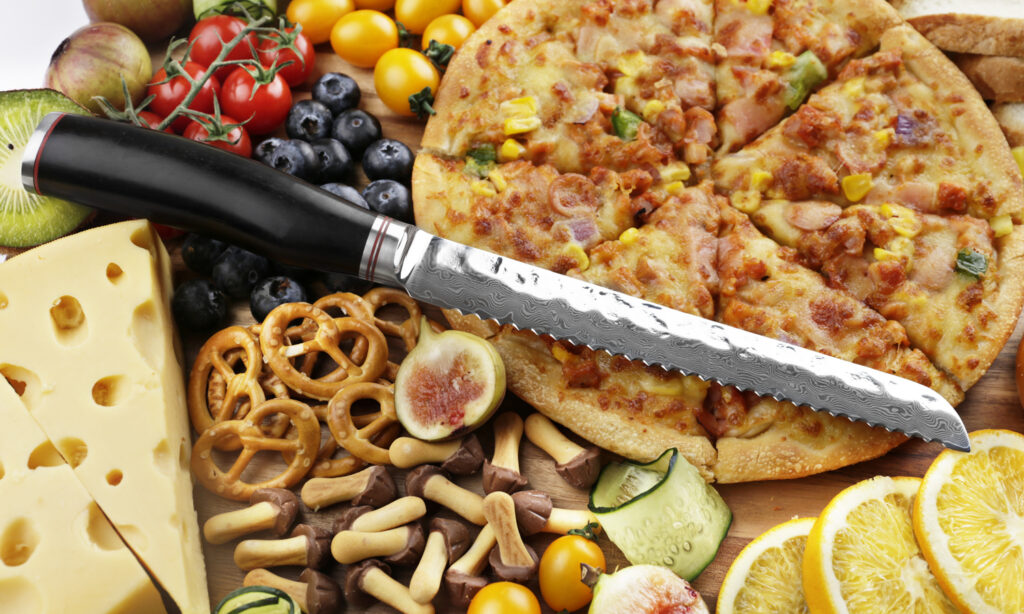
Choosing the right bread knife can make a world of difference in your kitchen. Here are some key features to consider:
1. Blade Length
Bread knives typically come in lengths ranging from 8 to 10 inches. A longer blade is better for slicing through larger loaves, while a shorter blade is easier to control for smaller loaves and pastries. The ideal length will depend on the types of bread you most often slice.
2. Serration Type
The serration on a bread knife’s blade plays a critical role in its performance:
- Wide Serrations: These are better for cutting through thick, hard crusts, like those found on sourdough or artisan loaves.
- Narrow Serrations: These are ideal for softer breads, such as brioche or sandwich bread.
- Scalloped Edge: Some bread knives feature a scalloped edge, which is less aggressive than pointed serrations and works well on both crusty and soft breads.
3. Blade Material
The material of the blade affects the knife’s sharpness, durability, and ease of maintenance:
- Stainless Steel: This is the most common material, known for its resistance to rust and ease of maintenance.
- High Carbon Steel: This material is harder and retains sharpness longer but may require more care to prevent rusting.
- Ceramic: Lightweight and extremely sharp, ceramic blades are ideal for precision but can be brittle and prone to chipping.
4. Handle Comfort
A comfortable handle is essential, especially for slicing through large, tough loaves. Handles made of wood, plastic, or composite materials offer different levels of grip and comfort. Look for a handle that feels good in your hand and offers a secure grip.
5. Balance and Weight
A well-balanced knife provides better control, reducing the effort required to slice through bread. Consider a knife that has a good balance between the blade and handle, as this will make it easier to maneuver.
How to Slice Bread Perfectly Every Time
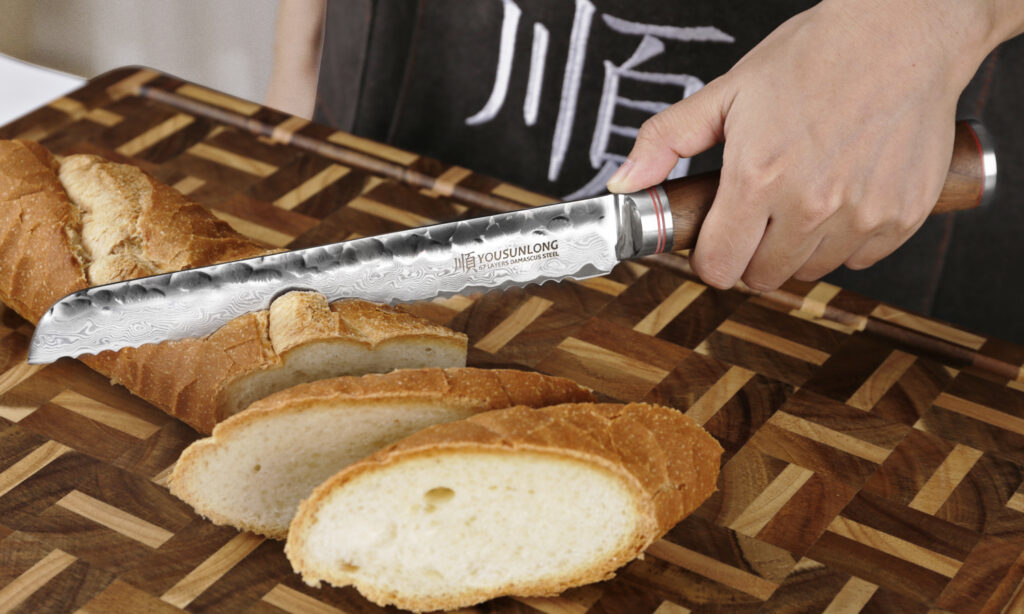
Now that you’ve chosen the perfect bread knife, it’s time to master the technique of slicing bread. Follow these steps for consistently perfect slices:
1. Let the Bread Cool
If you’re slicing freshly baked bread, resist the temptation to cut into it immediately. Hot bread is more likely to tear or become squished under the pressure of the knife. Allow the bread to cool to room temperature before slicing to achieve cleaner cuts.
2. Position the Bread Properly
Place the loaf on a stable cutting board. If you’re slicing a round loaf, you may want to place it on its side for more stability. For longer loaves, position the bread horizontally, with one hand gently holding the loaf in place.
3. Use a Gentle Sawing Motion
A common mistake when slicing bread is applying too much pressure. Instead of forcing the knife through the loaf, use a gentle back-and-forth sawing motion. The serrations will do the work for you. Start by making a shallow cut at the top of the loaf to guide the knife, then continue with smooth, steady strokes.
4. Apply Even Pressure
While sawing, apply even pressure along the length of the blade. Avoid pressing down too hard, as this can squish the bread or create uneven slices. Allow the weight of the knife to guide the blade through the loaf.
5. Keep the Loaf Steady
Use your non-dominant hand to keep the loaf steady, but be mindful of your fingers. Some people find it helpful to use a bread slicing guide, which can hold the loaf in place and ensure even slices.
6. Adjust the Thickness
Decide beforehand how thick or thin you want your slices to be. For toasting or serving with soups and dips, thicker slices work well. For sandwiches, thinner slices are often preferred. Keeping the knife at a consistent angle as you slice will help you achieve uniform thickness.
Recommended YOUSUNLONG 8-Inch Bread Knife
Premium Blade Material: Crafted from high-quality stainless steel, the blade offers excellent durability, rust resistance, and sharpness retention, ensuring it stays sharp for a long time.
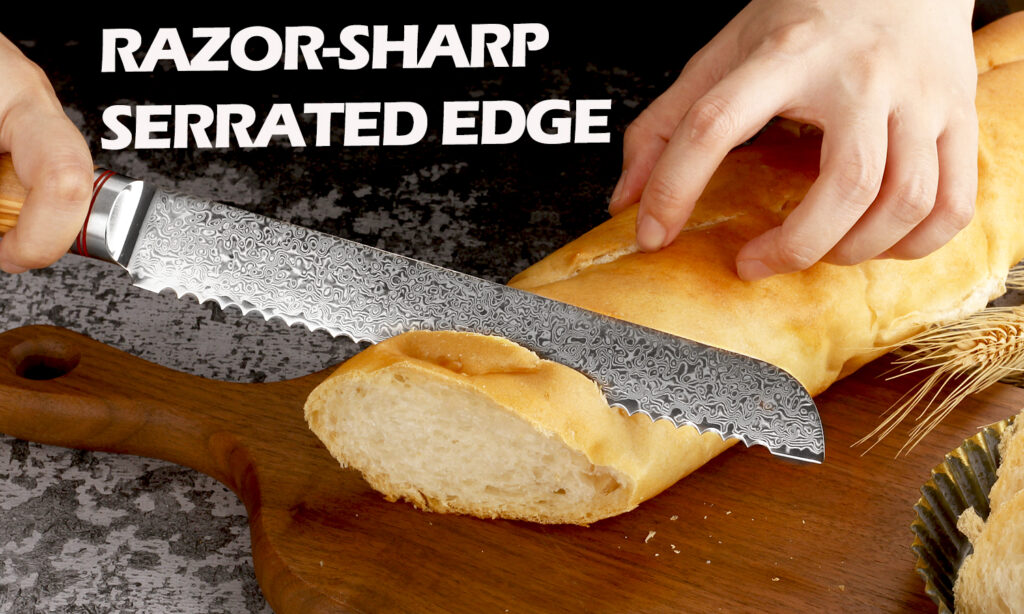
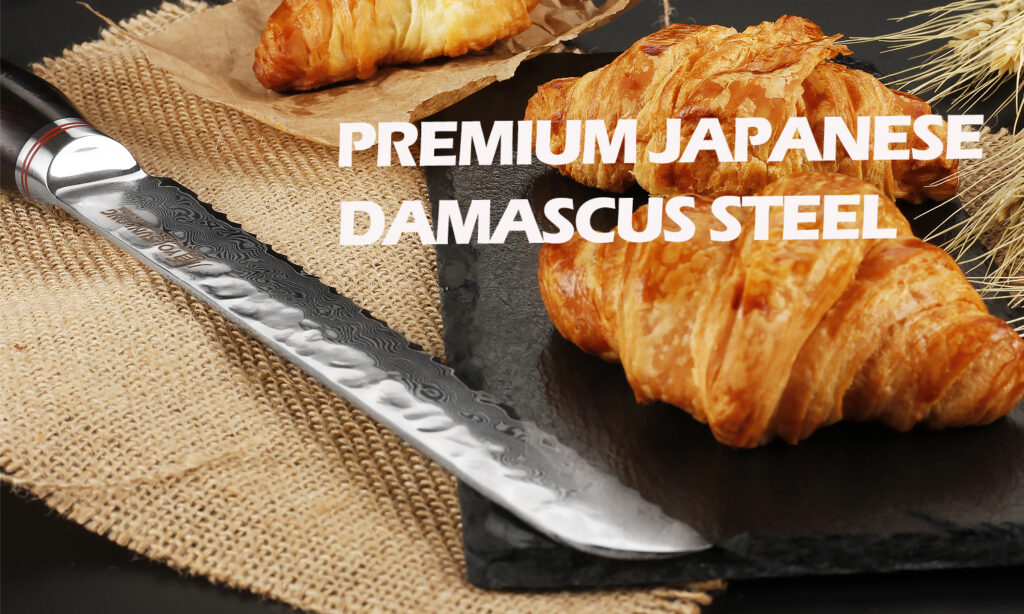
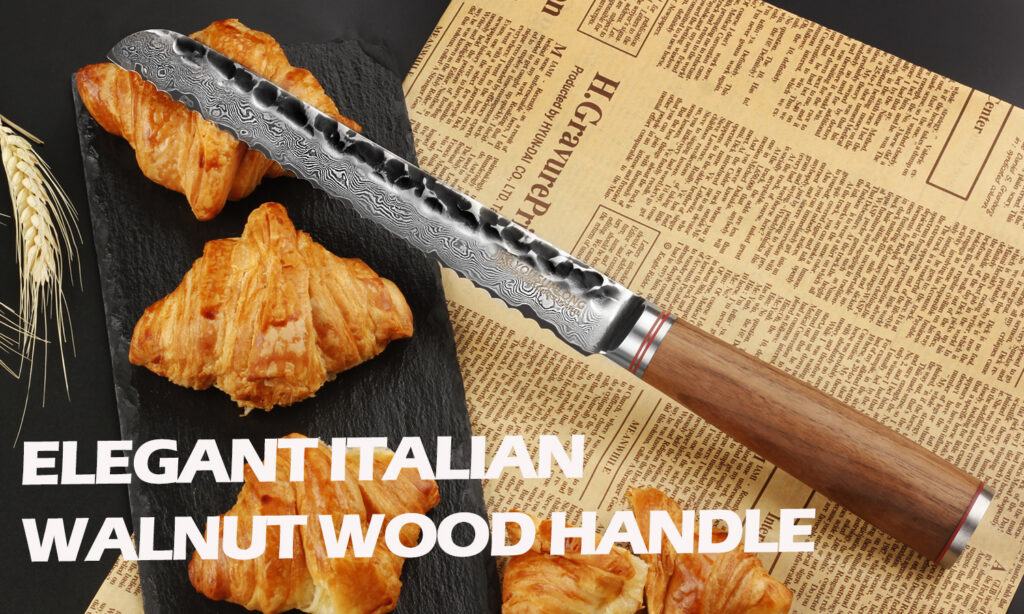
- 8-Inch Serrated Blade: The ideal length for versatility in slicing different sizes and types of bread, from baguettes to round loaves.
- Ergonomic Handle: Designed for comfort and control, the handle provides a secure grip, reducing hand fatigue even during extended use.
- Precision Serrations: The finely honed serrations make it easy to slice through tough crusts while keeping the interior of the bread intact, resulting in clean, even slices every time.
- Elegant Design: The YOUSUNLONG Bread Knife features a sleek and modern design that complements any kitchen.
For anyone serious about baking or simply enjoying quality bread at home, the YOUSUNLONG 8-Inch Bread Knife is a must-have addition to your kitchen arsenal.
A good bread knife is an essential tool in any kitchen, offering precision, ease of use, and versatility. Whether you’re slicing a crusty loaf of sourdough, a delicate brioche, or even a cake, the right bread knife ensures that every slice is perfect. By choosing a high-quality bread knife, mastering proper slicing techniques, and taking care of your knife, you’ll be well-equipped to tackle any bread-slicing task with confidence. Happy slicing!
Great article! I really appreciate the clear and detailed insights you’ve provided on this topic. It’s always refreshing to read content that breaks things down so well, making it easy for readers to grasp even complex ideas. I also found the practical tips you’ve shared to be very helpful. Looking forward to more informative posts like this! Keep up the good work!